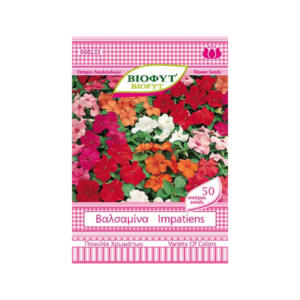Baby’s Breath
Baby’s Breath
Gypsophila (Gypsophila sp, Caryophyllaceae) is native to Europe and Asia and belongs to the Caryophyllaceae family. The genus Gypsophila includes 80-100 annual or perennial species. The most common species in our country are: G. repens, G. Paniculata, G. Bianca. It is an ideal ground cover plant and a well-known climbing plant used to make wedding flower arrangements. It owes its name to its white flowers.
Soil advice: It is a plant that prefers neutral-alkaline, light, sandy and very well-drained soils. The soil must not retain water and have good ventilation, otherwise the plant will dry out. It is also a plant that can withstand marine areas.
Growth Rate: Shows a fast growth rate.
Light: Grows very well in sunny positions and in partial shade.
Temperature: It can withstand very high temperatures where it increases its flowering, while it cannot withstand low temperatures (up to 38 degrees Celsius).
More Products
Sunflower Bicolor
Sunflower BicolorThe sunflower, the well-known sunflowers, is a favorite summer plant to decorate our garden or balcony to give us its impressive flowering. The name of the sunflower comes from the fact that its head constantly turns towards the sun’s rays during the day and turns again, in the morning hours, towards the east. The dwarf varieties of sunflower, which reach up to 40-50 cm in height, are suitable for pots, while for the garden we prefer the taller varieties that exceed one meter and are also edible. The characteristic color of sunflower flowers is yellow but now new sunflower varieties have been created in shades from pale yellow to red and brown.
Zinnia Giant
Zinnia GiantZinnia is an annual ornamental plant that impresses with the variety of colors and shapes of its flowers. The zinnia has upright strong shoots with a length of half to one meter and large flowers that remain in bloom throughout the summer. We can find tall and short varieties of zinnia and plant them in a pot but also in a rock garden, on the lawn, and in flower beds, in various combinations with other herbaceous flowering plants.
Balsamina
BalsaminaBalsamina is a decorative, small and herbaceous plant of medium growth, with intense foliage and flowers in red and pink shades.
Balsamine (Impatiens balsamine) is also known as balsamine, impatience or love. This plant is preferred for gardens and terraces as it is easy to grow and does not need much care, it has a characteristic multi-month flowering and makes the most of shady places. The planting of the balsamina should be done in shady places and not have direct contact with the sun’s rays. In combination with plenty of water, the balsamina blooms both on the branches and throughout its central trunk.
Snapdragon Giant
Snapdragon GiantThe Snapdragon, a favorite ornamental plant with wonderful flowers, is planted in the spring and is a characteristic plant of the Mediterranean, with rich vegetation. We will find Snapdragon in dwarf varieties from 20-40 cm, medium height from 40-60 cm and tall varieties from 60-120 cm. Although a perennial plant, it is usually planted as an annual in gardens and in pots on the balcony to give us rich flowering and impressive color combinations. Snapdragon thrive in full sun, although they can adapt and thrive even in shady areas.
Euphorbia
EuphorbiaEuphorbia lactea cristata, is an easy-to-grow succulent, resulting from the grafting of two species. That is, two plants in one! Its upper part is Euphorbia lactea and its color is silver-grey, which can turn reddish if the plant is happy in its environment. Its lower part is usually Euphorbia neriifolia. Its shape resembles a coral and resulted from a normal mutation of Euphorbia lactea and is also known as Coral plant. Prefer bright spots in the growing area. With gradual acclimatization, it can also live in direct sunlight.
Four o’clock Flower
Four o’clock FlowerAn ornamental plant even for its leaves. Flowers open on cloudy days. For cultivation, in groups or individually. It is 70 cm tall. It appreciates fresh soil, but be well drained, fertile soils, neutral to alkaline.









